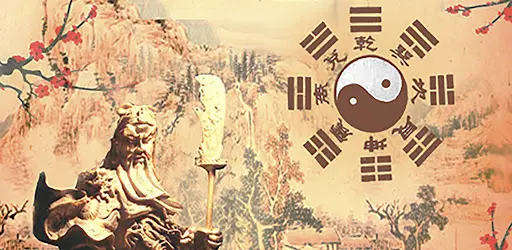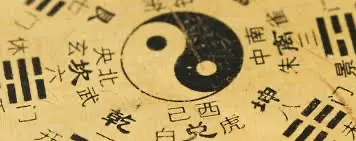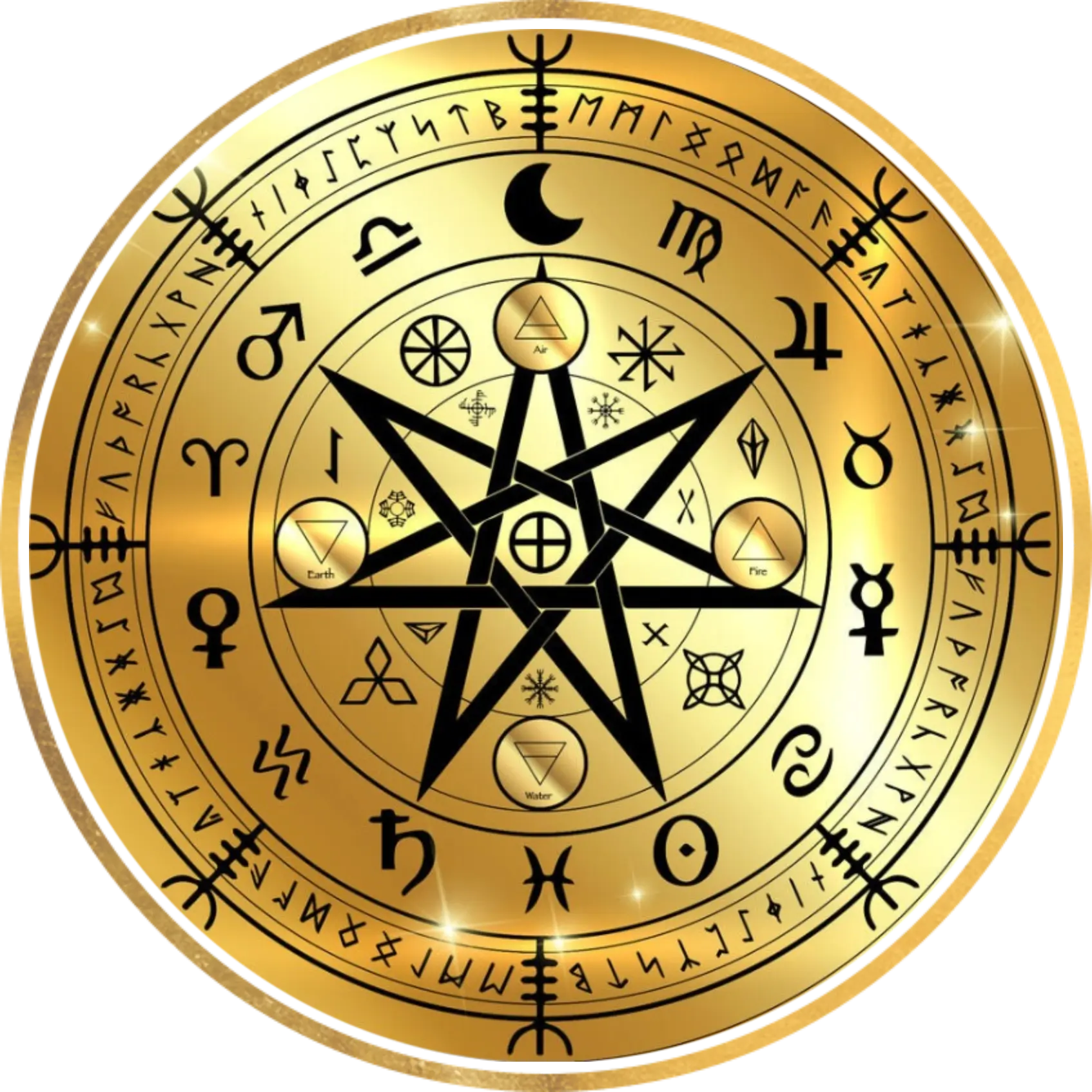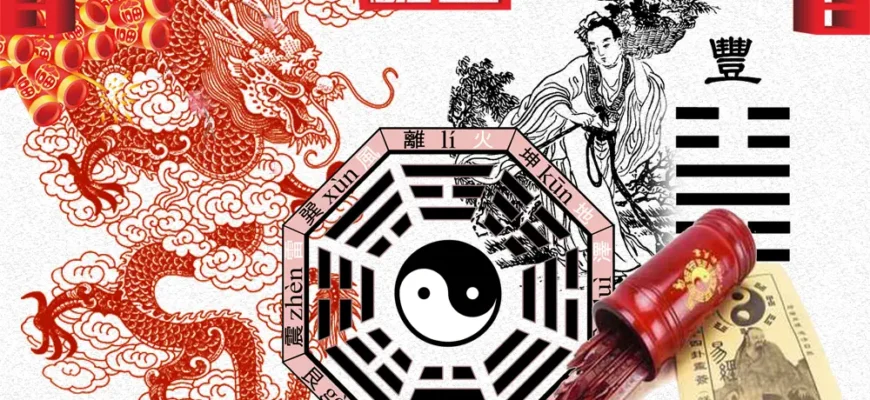The “Book of Changes” represents an ancient manuscript shrouded in numerous mysteries and enigmas, having earned recognition as one of the three greatest works of antiquity alongside the “Classic of Mountains and Seas” and the “Yellow Emperor’s Classic of Internal Medicine.”
Assessment of the I Ching
When conversation turns to the “I Ching,” many people form an impression of a book devoted to the art of divination and the practice of feng shui. However, in reality, what stands before us is the most ancient and profound classical work of global significance, serving as the foundational source of classical Chinese philosophical thought. This is the true “wisdom of wisdom, classic of classics, philosophy of philosophy.” The great Confucius uttered the following words: “If fate had granted me several more years of life, I could have comprehended the depths of the I Ching by the age of fifty and thereby avoided committing serious and irreparable mistakes.”
The “Book of Changes” is justly known by the honorable designation “chief among all classical works and primary source of great truth.” The fundamental ideas laid down in the “Book of Changes” served as the cornerstone of Chinese cultural tradition, and all subsequent philosophical directions and schools of thought trace their origin directly from it.
An authoritative and comprehensive description of the “Book of Changes” is presented in the documentary film by China Central Television entitled “The Secret Kingdom of the Heavenly Book,” which states the following: “When discussing and examining ancient Chinese classical philosophical works, it is impossible to overlook one outstanding work. It is justly called the theoretical root of natural philosophy and humanistic practice within the framework of traditional Chinese thought and culture. This book is none other than the ‘Book of Changes.’ It represents a genuine crystallization of ancient Han thought and wisdom and is proclaimed as nothing less than ‘the source of the great way.’ Whether it be the sacred teachings of Confucius and Mencius, the philosophical theories of Laozi and Zhuangzi, the celebrated ‘Art of War,’ or the fundamental ‘Yellow Emperor’s Inner Canon’ – all of them without exception are closely connected with the ‘Book of Changes’ and draw their foundational principles from it.
The outstanding thinker Nan Huaijin in his profound work “Miscellaneous Essays on the Book of Changes” formulates this as follows: the philosophical ideas of Laozi, Confucius, and representatives of various schools of thought – all of them without exception trace their roots to the “Book of Changes.” Similar concepts, such as “Hidden Blessing” (expressed in the famous saying “Loss of a horse in blessing may turn out to be a blessing”), also take their beginning from the “Book of Changes.” Thus, the famous saying of Laozi states: “Blessings often intertwine with misfortunes, and misfortunes often intertwine with blessings” – all these profound thoughts ascend to the foundational ideas of the “Book of Changes.”
The independent scholar and thinker Wang Dongyue summarized his research as follows: “The I Ching rightfully occupies first place among the five classical treatises. Since it constitutes the unshakeable foundation of East Asian thought and culture, it has exerted a foundational and profound influence on all subsequent teachings, doctrines, and philosophical currents.”
The esteemed Professor Lu Hongsheng from Capital Normal University expressed himself as follows: “The Book of Changes bestows upon us invaluable wisdom regarding how to be a worthy person, how to perfect one’s personality, how to conduct successful business, and how to wisely govern a state.”
Meanwhile, the “I Ching” presents an extremely difficult text to understand, and this is justly acknowledged as the most complex book in the entire rich history of Chinese culture. Upon opening the pages of this ancient work, readers inevitably encounter a stunning and confusing array of enigmatic hexagram symbols, as well as incomprehensible and extremely complex hexagrams and their linear interpretations.
Throughout the vast history of humanity, countless scholars have devoted themselves to studying the “Book of Changes,” yet only a chosen few have been able to truly comprehend and interpret its profound essence. The most outstanding scholar and interpreter, besides the great Confucius, was undoubtedly Zhu Xi, the leading and most authoritative figure of the Neo-Confucian school of philosophical thought.
That is precisely why Zhu Xi uttered the following remarkable words: “The Book of Changes is extremely difficult to understand, unlike all other books,” and additionally added: “This is truly the work of great sages, completely inaccessible to ordinary scholars.” Moreover, taking into account the fact that modern people have long been separated from living traditional culture, understanding the “Book of Changes” becomes even more difficult and unattainable. Sometimes I am deeply puzzled and ask myself: did ancient people truly possess such incredibly deep and penetrating wisdom? Or are we simply mystifying its content, or interpreting it to suit our own whims and preferences?
The esteemed Professor Fu Peirong recounted a remarkable story that when studying the extensive corpus of ancient Chinese classics, he deliberately placed the “I Ching” in last place on his list, since this represents the most complex book, requiring certain and quite significant life experience for its adequate understanding. The great Confucius himself began systematic study of the “I Ching” only upon reaching fifty years of his life. Although the content of this remarkable book is extremely laconic and concise, its philosophical principles are extraordinarily deep and require real and rich life experience for their comprehension.
So, a natural question arises: should we still attempt to study the “I Ching”? Professor Fu Peirong expressed his position in three remarkable sentences: “First, if you do not begin study, you will definitely not learn it; second, if you begin study, you will not necessarily learn it completely; third, if you begin to study, you will receive invaluable benefit from it throughout your remaining life.”
I deeply believe that reading introductory books on the “I Ching” and comprehending its wisdom can significantly help us understand the ideological roots of our rich traditional culture and draw invaluable wisdom from it. For example, when I was working on writing this article, in addition to scattered sources and materials, I primarily turned to the substantive lecture series by Professor Fu Peirong.

The Author of the Book of Changes
The popular and now-classical statement about the authorship of the “Book of Changes” states the following: “In history there existed three great sages and three ancient times.” This remarkable quote belongs to the pen of the Eastern Han historian Ban Gu from his fundamental work “Book of Han: Records of Arts and Literature.” This means that the “Book of Changes” represents the collective wisdom of numerous sages and outstanding philosophers, namely: Fuxi in ancient times, King Wen of the Zhou Dynasty in the middle ages, and the great Confucius in recent past (the latter refers to the historical period from the beginning of the Eastern Han Dynasty to the era of Confucius).
In the sacred text of the “Book of Changes” (Xici II) the following is stated: “In most ancient times, when the world was wisely ruled by Baoxishi (note by Buyi Gongzi: Baoxishi is the same as Fuxi), he directed his gaze to the heavens to carefully observe its amazing patterns, and turned his gaze to the earth to thoroughly observe its patterns. He attentively observed the patterns of birds and beasts, as well as the suitability of the earth for various purposes. He drew inspiration from his own body and from distant objects of the surrounding world. Thus he created the famous Eight Trigrams to comprehend the virtues of the gods and classify the emotions of all things in the universe.”
This clearly shows that it was Fuxi who completed the creation of the Eight Trigrams (known as the Eight Prenatal Trigrams of Xiantian). However, a natural question arises: were the Sixty-Four Trigrams also created by Fuxi? In the course of my research, I discovered that many authoritative scholars hold the opinion that the Sixty-Four Trigrams were created by King Wen of the Zhou Dynasty.
In the classical book “Zhou Li” in the section “Spring Offices” the following statement is contained: “The Great Diviner bears responsibility for three methods of Yi: the first method is called Lianshan, the second method is Guicang, and the third method is Zhou Yi. Each of these methods consists of eight hexagrams, and each has sixty-four additional hexagrams.”
Zheng Xuan, an outstanding Confucian scholar of the Eastern Han Dynasty period, held the opinion that: “The Xia Dynasty called it by the respectful name ‘Lianshan,’ the Yin Dynasty called it ‘Guicang,’ and the Zhou Dynasty called it ‘Zhou Yi.'”
From this it logically follows that even before the appearance of Zhou Yi there existed Lianshan of the Xia Dynasty and Guicang of the Shang Dynasty (both these ancient texts are unfortunately lost), in both of which sixty-four hexagrams were already present. Therefore many authoritative scholars hold the conviction that these sixty-four hexagrams were also derived by the great Fuxi.
For example, the respected Professor Fu Peirong expressed himself as follows: “Fuxi was the first who drew the eight separate hexagrams, and he must be precisely the person who overlaid these eight separate hexagrams upon each other to form the sixty-four hexagrams.”
In the famous “Records of the Grand Historian” by Sima Qian the following statement is contained: “King Wen was imprisoned and set forth the ‘Book of Changes.’ During his imprisonment in Youli prison, King Wen changed the order of the Eight Trigrams (that is, created the Eight Postnatal Trigrams) and designated the trigram Qian as the first of the sixty-four trigrams (taking into account that originally the first trigram of ‘Lianshan’ was the trigram Gen, and the first trigram of ‘Guicang’ was the trigram Kun), and also recorded the hexagram and linear statements for each trigram.”
The great Confucius, his devoted disciples, and subsequent generations of Confucian scholars repeatedly revised and supplemented the sections of “Yi Zhuan” interpreting the profound meaning of the “I Ching.” Professor Fu Peirong states the following: “‘Yi Zhuan’ represents the collaborative work of Confucius and his disciples, transmitted through at least ten generations, up to Sima Tan, father of the great historian Sima Qian.”
The Compilation of the “I Ching”
The “Book of Changes” originally bore the brief name “Yi,” but was solemnly renamed “I Ching” only after it was compiled and edited by the great Confucius. Liu Xie in his famous work “Wenxin Diaolong” (“The Literary Mind and the Carving of Dragons”) states the following: “A classic represents eternal and supreme truth, unchanging and great teachings.” This means that so-called “classical works” are eternal, absolute principles, great teachings that are not subject to change and doubt.
As mentioned earlier, it is generally accepted that the “I Ching” was created by Zhou King Wen or, at least, was finally completed during the times of the Western Zhou Dynasty. By the historical period of Spring and Autumn and the period of Warring States, its profound meaning became extremely difficult to understand. Therefore, for the explanation and interpretation of the content of the “I Ching,” the commentary “Yi Zhuan” was created.
“Yi Zhuan” consists of ten chapters, known under the general traditional name “Ten Wings,” including “Tuan Zhuan” (two chapters), “Xiang Zhuan” (two chapters), “Xici Zhuan” (two chapters), “Wenyan Zhuan,” “Shuogua Zhuan,” “Xugua Zhuan,” and “Zagua Zhuan.” By the poetic name “wing” is meant the wings of a bird, symbolically signifying help and support.
If the “Book of Changes” represents a book of predictions and divination, then the “Book of Changes” is a profound philosophical work. The “Book of Changes” and “Book of Changes” together are known under the general name “Zhou Yi.” Along with “Lianshan” of the Xia Dynasty and “Guicang” of the Shang Dynasty, “Zhou Yi” enters into the sacred “Three Yi,” representing three great dynasties. To great regret, only “Zhou Yi” has survived to our days.

The Influence of the I Ching
The influence of the “Book of Changes” is absolutely unique in the world both in breadth of coverage and in depth of impact. No other work has exerted such wide and extraordinarily significant influence in antiquity and modernity, both in China and abroad.
In the fundamental “General Catalogue of Siku Quanshu” the following is stated: “The study of the ‘Book of Changes’ is extremely extensive and encompasses absolutely everything. It also touches upon astronomy, geography, music theory, military strategy, rhyme theory, arithmetic, and even the deepest questions extending far beyond Buddhism can be successfully explained with the help of the ‘Book of Changes.'”
Many people have perhaps not noticed the remarkable fact that an enormous number of words and idioms in our daily life originate directly from the “Book of Changes.” As is justly said in the “Book of Changes” (Xici Shang): “People use it every day without realizing it.” People daily find themselves under the invisible influence of the “Book of Changes,” completely unaware of this fact.
For example, an interesting question arises: why in ancient times was the emperor called by the honorable title “Supreme Ruler”? Nine-five is the best line in the hexagram Qian, and it states the following: “Flying dragon in the heavens, beneficial to see the great man.” Qian is the first of the sixty-four hexagrams, therefore Nine-five, recognized as the best of the three hundred eighty-four lines of the sixty-four hexagrams, became the honorable synonym for emperor.
The famous motto “Self-improvement and tolerance” – the motto of the prestigious Tsinghua University, which is taken from corresponding parts of “Xiang Zhuan” of Qian Gua and Kun Gua respectively, namely: “The movement of Heaven is vigorous, and the noble person must tirelessly strive for self-improvement” in Yi Zhuan Qian Xiang and “The conditions of Earth are gentle, and the noble person must be virtuous and tolerant toward everything” in Yi Zhuan Kun Xiang.
In addition, there exist numerous words or idioms, all without exception originating from the “Book of Changes,” such as: without a leader, uninvited guest, feast upon feast, greedily observe, incredible, start with a clean slate, everything depends on a person’s opinion, different paths lead to the same destination, good times after bad times, and so forth. You can also provide significantly more examples.
Since the times of the late Ming Dynasty, the “I Ching” has been translated and actively disseminated to the West thanks to the efforts of missionaries. In our time, the “I Ching” has been repeatedly translated into many languages and in various versions and is distributed throughout the world.
The admiration of the Korean people for this flag is completely self-evident, and the pattern on their national flag speaks eloquently for itself. (However, this circumstance also causes some concern and apprehension.)
The binary algorithm of the outstanding German philosopher and mathematician Leibniz laid the foundation for the era of great information in which we live today. The binary algorithm has obvious similarity with the hexagrams from the ancient Chinese “Book of Changes,” which led to the widely held opinion that “Leibniz’s binary algorithm originated directly from the ‘Book of Changes.'”
Of course, there are also many opponents of this statement. I studied a large volume of information and materials and approximately understood the following process from the substantive book “Emperor Kangxi, the Jesuits, and Scientific Communication.”
In a letter dated February 15, 1701, Leibniz for the first time detailed and thoroughly expounded his binary theory to Joachim Bouvet (Note: Joachim Bouvet, born between 1656 and 1730, was a French Jesuit who faithfully served Emperor Kangxi and wrote his biography). Believing that his work on binary theory would have a significant impact on Chinese philosophers and even interest Emperor Kangxi himself, Leibniz convinced Bouvet to present it to him.
On November 4, 1701, Bouvet wrote to Leibniz from Beijing a long and substantive letter in which he thoroughly discussed issues related to the binary system and attached to the letter a diagram of Fuxi’s hexagrams. The letter reached Leibniz only in 1703. In it, Bouvet remarkably noted that Leibniz himself believed that the binary system opened the path to science, but it should not be considered a completely new science, since Fuxi had already invented it in ancient China.
On May 18, 1703, Leibniz responded to Bouvet’s letter, asserting that Fuxi was the founder of Chinese science, and the hexagram was one of the most ancient milestones in the history of science. Moreover, Leibniz had already on March 15, 1679, written manuscripts in which he examined the binary number system in considerable detail. At approximately the same time when he was conducting correspondence with Bouvet, Leibniz published their discussion of the binary number system in the prestigious journal of the French Royal Academy of Sciences, which attracted significant attention from European scholars. The article was titled “On Binary Arithmetic, Using Only Zero and One, with Reflection on Its Application and the Significance It Gives to the Ancient Schemes Used by Fuxi.”
Throughout many millennia, Chinese scholars have justly considered the “I Ching” a classic worthy of constant reading and daily study. In the characteristic poem of the scholar of the Southern Song Dynasty era named Ye Cai entitled “Late Spring” the following is stated: “Two sparrows flutter on the table, and poplar catkins fall into the inkwell. Sitting idly by the window and reading the ‘I Ching,’ I lose track of time and do not notice how spring has passed.”
Professor Fu Peirong expressed the following remarkable thought: “The I Ching represents an ancient book full of incomparable wonder. Those people who cannot understand it call it a heavenly book written in incomprehensible words, those who understand it even a little experience awe and reverence, and those who truly understand it love it and always keep it on their desks, turning to it for any life questions and thus acquiring wisdom in relations with the world.”
As is justly said in the “Book of Changes” Xici Shang: “Therefore, when a gentleman is at home, he observes the images and enjoys the words; when he is on the road, he observes the changes and enjoys the predictions. Thus he will be blessed by the heavens, and everything will be good and prosperous.”

